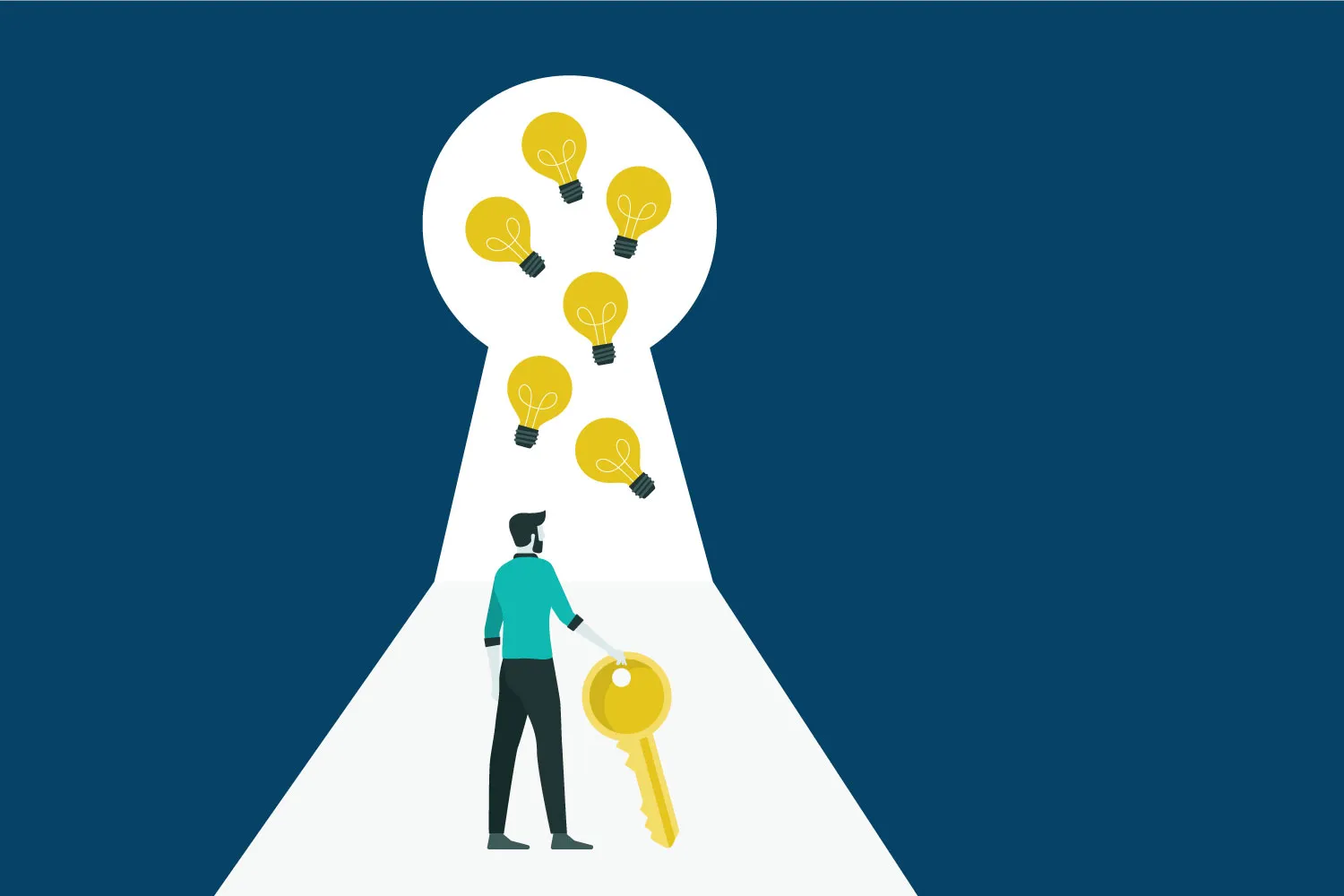May 20, 2020
6 business lessons to take into the post-COVID world
The COVID-19 pandemic has caused sweeping and unexpected disruptions to the retail world. But as Rahm Emanuel said, “never let a good crisis go to waste.” As we wait for the immediate crisis to pass, let’s take this opportunity to re-evaluate the systems and ideas we use to drive our businesses. What can we learn? How can we mitigate the impact of a crisis like this in the future?
Every challenge presents an opportunity for growth.
Many of today’s business leaders are facing the most significant crisis they ever have or will in their lifetimes. It’s important to start thinking now about how to find meaning, acceptance, and innovation to prevent being caught off guard again.
Here are 6 key lessons to take away from this experience to bolster your business against unexpected disruptions in the future.

6 business lessons to take into the post-COVID-19 world
1. Engaging, delighting, and retaining the customer should always be your top priority.
What do all of the most successful, resilient businesses have in common?
They lead with the customer.
At every touchpoint, from product development to marketing to customer service, successful businesses use customer data and insight to understand how best to cater to their customers’ needs, desires, attitudes, and lifestyles. This customer-centric approach helps businesses provide the exceptional experiences their customers deserve and ultimately leads to increased customer loyalty and lifetime value.
Customer centricity has been an important concept for some time, but the COVID-19 pandemic has forced it into the spotlight. The businesses that have tried to push through the pandemic with uninformed or unsympathetic strategies have been quickly called out and abandoned by their customers, while those that have pivoted toward social good and genuine customer engagement have been able to drive sales and grow their databases with both new and returning customers.
Mind you, making a radical shift to community messaging during a crisis can come across as lacking authenticity. Most of the brands that have successfully implemented social good programs as a response to the crisis already had customer-centricity as a core component of their messaging beforehand, so leaning into the idea of commitment and community helped strengthen the loyalty of their existing customers.
Though the pandemic has caused stress and challenges for all of us, let it serve as a reminder for the foreseeable future: Always put the customer first.
2. Don’t put all of your eggs into the brick-and-mortar basket.
The COVID-19 pandemic has changed consumer behavior. Brick-and-mortar locations are closed and shopping has moved almost entirely to ecommerce channels. Although most of the physical store closings are temporary and many locations are expected to reopen as soon as the crisis has passed, consumers are unlikely to give up the convenience of omnichannel engagement options.
Omnichannel business models aren’t just about customer convenience, however. They act as a fail-safe for when a crisis like this occurs, providing business resiliency and expanded reach where there would otherwise be none. You need to increase the scale, maturity, and sophistication of your online presence to boost your resiliency moving forward.
3. Focus on value, not discounts.
Smart and intentional discounts can be an effective strategy for driving sales. Many businesses are offering significant discounts to their customers in response to the pandemic; as unemployment continues to climb, offering a discount is an informed and sympathetic way to engage your brand community.
Excessive discounting can be like a drug, however, and it’s not a sustainable strategy that you should take with you into the post-COVID-19 world. If you don’t keep discounting in check, you may come to rely on it as a quick conversion strategy while ultimately eroding the perceived value of your products. Try to avoid slashing prices as the single strategy to motivate your customers and focus on providing value to the customer instead.
For example, many brands are adding value to their customers by launching social good programs in response to the pandemic. Charitable donations, support for small businesses, community-building, acts of kindness, and similar offerings are great ways to add value to your customers, and they can be just as—if not more—effective at driving sales as discounts.
By using strategic offers like these to emphasize the value you’re providing, as opposed to the price of the product, you can influence greater customer loyalty and engagement without sacrificing margins.
4. Winning businesses need real-time customer insight and high-powered activation capabilities.
The COVID-19 pandemic caused a rapid transformation of consumer preferences and behaviors. As outlined in EY’s Future Consumer Index, four consumer segments have emerged in response to the crisis:
- Save and stockpile (35% of consumers): This segment is pessimistic about the long-term effects of the pandemic, and they’re concerned about the safety and wellbeing of their families. They’re buying up essential goods like food and over-the-counter medicines while spending less on luxury categories.
- Cut deep (27% of consumers): This segment is pessimistic about the future because they’ve been deeply impacted by the crisis; they may have lost their jobs or family members. They’re spending less across all categories.
- Stay calm, carry on (26% of consumers): This segment hasn’t been directly affected by the pandemic, but they’re worried about the impact of large-scale stockpiling. Their spending behaviors haven’t changed much.
- Hibernate and spend (11% of consumers): This segment is deeply concerned about the pandemic but is also in a great position to deal with it. Many of them are spending more across every category, including luxury or non-essential categories such as entertainment, electronics, and beauty products.
In order to operate your business effectively both during and after the pandemic, you need to be able to quickly understand the changes in consumer behavior within your customer base. To do so, you need the tools to achieve real-time customer insights.
But remember, insight is only as powerful as the action that follows it. You also need the agile processes and activation capabilities to respond to and capitalize on these changing behaviors as they occur. By investing in streamlined, marketer-friendly tools for insight and activation such as a Customer Data Platform, you can position your business to successfully adapt to the ebb and flow of consumer behavior in the future.
5. Genuine, meaningful communication between brands and buyers is key to driving loyalty.
The sensitive nature of COVID-19 has forced businesses to take a critical look at their communication strategies.
Many brands have misfired with empty, vague, opportunistic, or otherwise insensitive messages and experienced backlash by their communities. Other brands have communicated with empathy, honesty, and gratitude, offering the soothing, supportive, and sometimes comedic experiences their customers need during this troubling time. The latter has emerged as the clear winner for customer communications.
This type of insight-driven communication is based on a genuine understanding of who customers are, how they think, and what they value. It’s about approaching every customer touchpoint with care and tailoring your messages to best meet the needs of each of your customer segments—because ultimately when you take care of your customers, they take care of you.
The bottom line: Meaningful, one-to-one communications create an emotional resonance that drives sales, word-of-mouth marketing, and lifetime loyalty.
6. A test-and-learn culture empowers businesses to recover from setbacks.
The beauty of ecommerce is that it provides a wealth of customer data that you can use to enhance every aspect of your business. As you collect new and greater volumes of data from online shoppers, you can begin to form hypotheses about how to improve the customer experience, put those hypotheses to the test, and learn from the results.
This iterative and continuously-improving process allows your business to learn quickly and recover from setbacks. It forms the basis for agility and resilience, even in rapidly evolving situations.
Additionally, it enables you to incorporate the other five business lessons more effectively; testing and learning help you:
- Improve customer engagement.
- Optimize operations across every sales channel.
- Understand the true value of your products and campaigns.
- Discover more accurate customer insights.
- Spark more meaningful conversations with your customers.
There’s always more to learn. As you adjust to life during and after the pandemic, make a commitment to follow your curiosity and dig deep into your data to see what more you can discover about your customers, your products, and your business as a whole.
COVID-19 has been a learning experience for all of us—let’s use what we’ve learned to future-proof our businesses
Even the most devastating challenges don’t have to be a net-loss. By taking the time to understand, analyze, and learn from this experience, you can take away valuable lessons that will help you come out on top when the crisis subsides.
The most important lesson of all? Don’t wait.
Putting the customer first, optimizing omnichannel experiences, and using data to power campaigns and segmentation were all rising as critical business strategies before COVID-19 happened, and the most innovative brands adopted them first. Now is the time to start planning your post-COVID-19 strategies. Use these six lessons to develop a stronger, more agile, and more resilient roadmap for the future.
Navigating a crisis takes foresight, proactivity, and strategic planning from every angle. Click here to browse our curated list of retail-centered resources for mitigating disruptions caused by the COVID-19 pandemic.
As retail experts, we’re here to help you navigate this crisis. Use the calendar below to book a meeting and we’ll help answer any questions.
Speak with our retail experts

